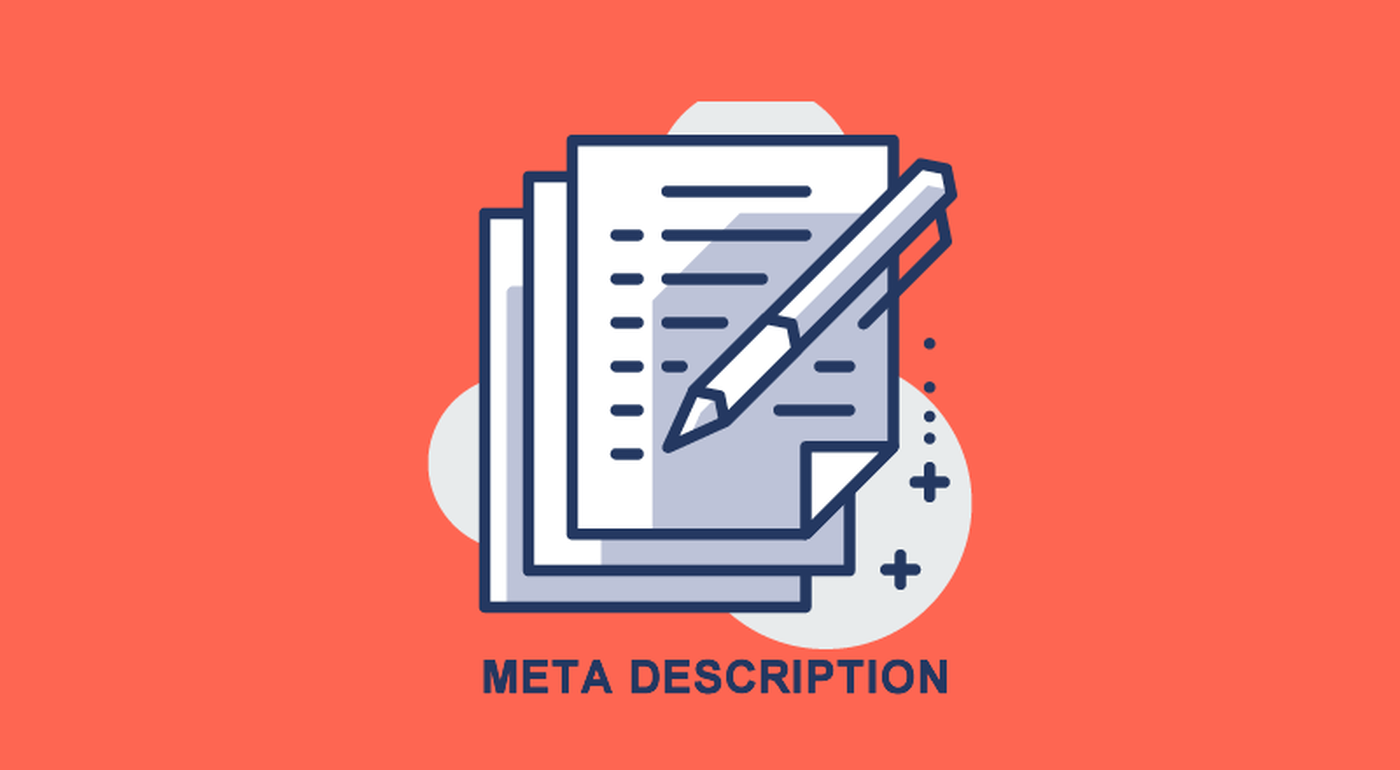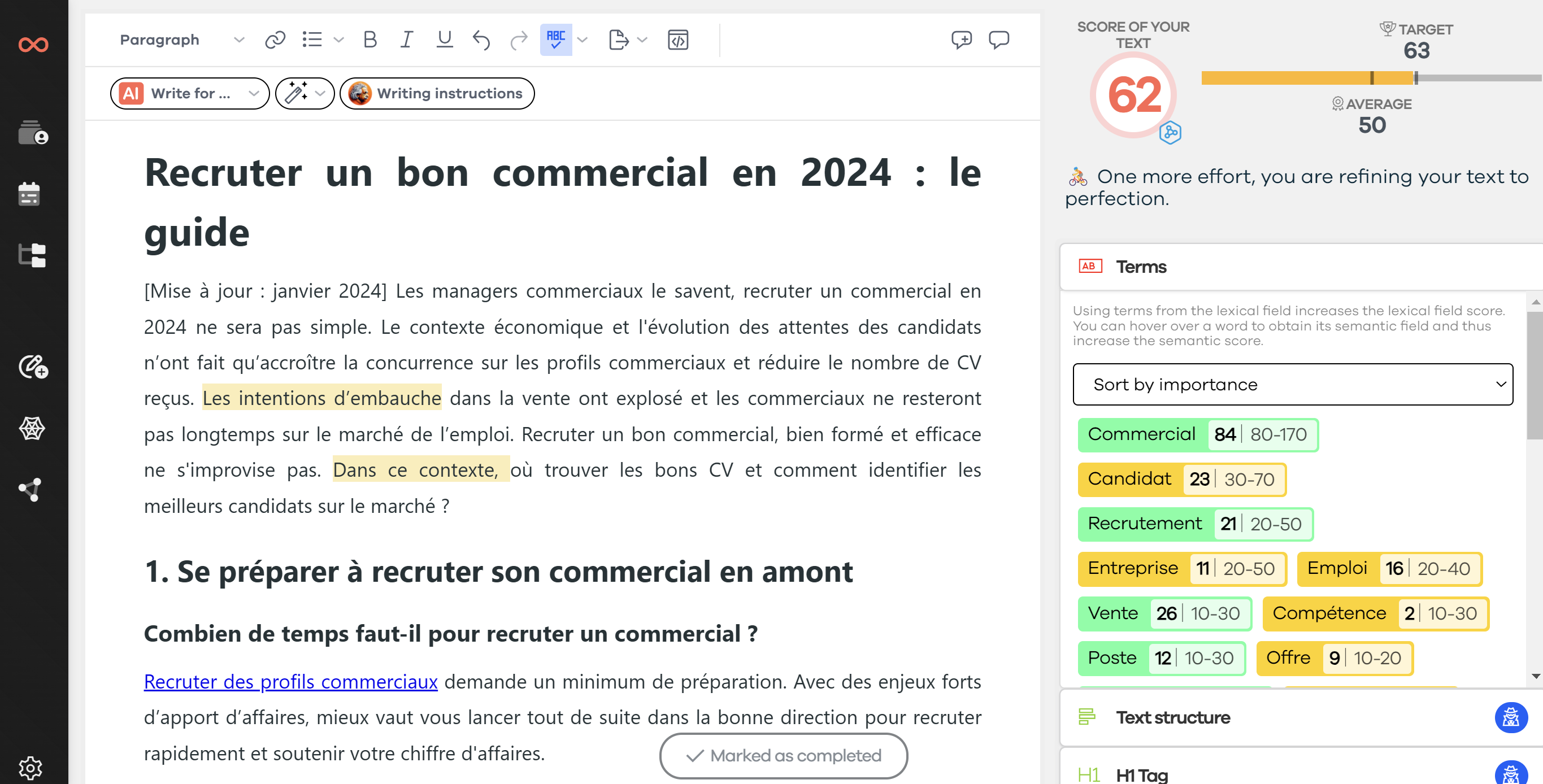Conducting a content audit is an essential SEO strategy for success in content marketing. First, I'll explain why you should regularly monitor your publications. Then, I'll detail all the points to consider for properly analyzing your content. At the end of this blog post, I'll provide a checklist summarizing everything you'll learn by reading this article.
❓ Why conduct a content audit?

The majority of marketers create content, then forget about it to move on to the next one. However, it is crucial to regularly check what you have already published. Indeed, there are many reasons why you should keep an eye on your old publications. To achieve this, the only way is to conduct a regular audit of your content.
- Achieve your goals: Are your content pieces effective? Is your return on investment (ROI) positive? If you don't regularly conduct a content audit, you don't know the answers to these questions.
- Up-to-date information: As time goes by, your texts may become outdated or even obsolete. What was truly relevant when creating your content may not be so today! Fortunately, simple transformations can easily update your content.
- Information authenticity: As your content ages, its accuracy deserves to be refined. What was true before may not be true today! With a content audit, you ensure that your company maintains a good reputation.
- Know what works: You want to know which type of content is most effective. You also want to know the best publishing frequency and the most profitable distribution channels. A content audit allows you to fine-tune your communication strategy and save valuable time.
- Compete and adapt to SERP evolution: Rest assured, your SEO competitors are also doing this work on their side. They too are trying to stay at the top of search engine results pages and adapt their content to algorithm changes.
Now that you know why you should pay attention to your old publications, let's explore how to implement an effective content audit.
🎯 Define the objective of the SEO content audit

Set clear and precise objectives beforehand so that your content audit is as efficient as possible. Your goal is, of course, for your publications to align with your business objectives, but also to know their effectiveness. Your content marketing strategy aims to promote your business and improve its profitability. Here are several ways to achieve this.
Visibility
For your content to be effective and attract traffic to your website, it must be visible on Google and other search engines. To make this possible in the long term, your best ally is SEO. With a content audit, you can determine the pages with the most potential and know the adjustments to make to improve your organic ranking.
Engagement
Analyzing the engagement rate of your various content pieces will allow you to know what appeals most to your audience. Additionally, you'll better understand your readers' behavior and accurately determine the types of topics that work best. You'll also know which distribution channels are most effective depending on the themes covered.
Conversion
Although it is obviously the ultimate goal of any business, the conversion of prospects into customers can only be high if visibility and engagement are effective. With your content audit, you'll discover the sales pages that work best. You can then adapt your communication to less effective content. At the same time as you check your writing, you'll also determine the quality of the user experience (UX) of your most profitable pages.
📊 Analyze the statistics

Once the theoretical work is done, it's time for practice! Your goal is to properly analyze your statistics to better target your SEO content audit. You can perform a large part of this work using Google's free tools.
Google Search Console (GSC)
Google Search Console allows you to know all the pages indexed on the most used search engine in the world. You'll discover the performance of each of your content pieces and the keywords that bring the most traffic to your website. I invite you to read our complete guide on GSC to understand the full power of this web marketing tool.
Google Analytics (GA)
With Google Analytics, you'll have access to crucial information for your content audit.
- Bounce rate: If your visitors only stay for a few seconds on your page, it means your content does not match the user's search intent.
- Click-through rate: By comparing your Google ranking to the click-through rate (CTR), you can determine which metadata needs improvement (copywriting).
- Traffic source: Are your readers coming from the SERP (organic traffic), social networks, or directly connecting to your website? All this data allows you to determine the most effective content.
- Connection time: If your readers only spend a few minutes on your page while your content is long (over 2,000 words), they probably didn't find what they were initially looking for.
- Number of pages visited: The more pages your visitors read when connecting to your site, the more effective your internal linking is.
- Conversion rate: By analyzing this statistic, you accurately determine the most profitable sales pages. You can then adapt the content of the less effective ones.
Other statistics
Using a tool like Ranxplorer, you can easily analyze the evolution of your URLs in the SERP. The obtained positioning history allows you to know the content pieces that are losing power. You can then identify them as priority pages for updating your content. By analyzing your pages, you can also determine the number of keywords they are ranked for and their respective ranking for each of them. All this information is necessary to prioritize your future actions.
📃 Select the content to optimize
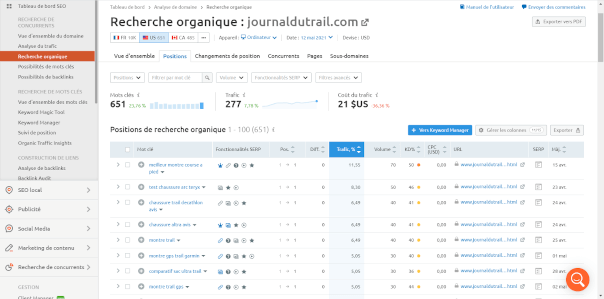
Now that the statistical analysis has been completed and your objectives have been clearly defined, you can determine which content pieces deserve optimization.
Find content to optimize
To find content to optimize, you'll crawl all of your URLs (blog articles, landing pages, sales pages, media, etc.). Coupled with the previously conducted analyses, you'll have all the necessary information to perform your content audit. To do this work and discover the improvement potential of each URL, you'll need a tool like SEMrush (very comprehensive) or Screaming Frog (for crawling your website).
Classify content to optimize
Once you've obtained all the URLs of your site and the data provided by your analysis tool, you can classify your content based on different factors:
- content type (blog, image, static page, etc.);
- publication date;
- content length;
- title;
- metadata.
With this table, you'll know all of your content visible on Google. You can then easily analyze them by focusing on the most relevant categories for your business.
🗓 Check the timeliness of the proposed content

You've grouped all your URLs and know their respective statistics; you can now proceed to the audit of the content proposed on each page. You'll now check that the information provided is still up-to-date.
- Internal linking: First, check that the internal links still work. Secondly, you can add new links based on content published after the concerned page went live.
- External links: Are the pages pointed to by your external links still online? Is their content still up-to-date and relevant? Perform these checks to ensure the added value of your content.
- Dates: Ideally, we try to publish timeless content. However, it's sometimes interesting to include a date in the title to attract users to your article (example: "how to conduct a content audit in 2021"). Remember to update this type of information, or risk appearing completely outdated the following year.
- Timeliness: Are the information or solutions you offer still current? If not, your content needs to be updated or removed from search engines (deindexing).
- Authenticity: As your content ages, its accuracy deserves to be refined. What was true before may not be true today! With a content audit, you ensure that your company maintains a good reputation.
- Relevance: Does the proposed content still meet the search intent of users? The world is changing rapidly, so always offer information that corresponds to the current reality.
🎡 Check the optimization of the editorial content
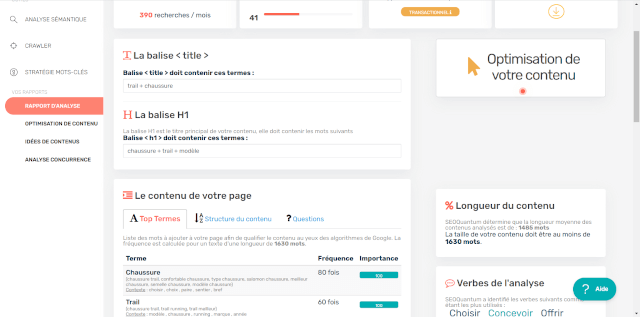
To optimize the editorial content according to search engine recommendations and the evolution of user needs, you must have a good understanding of SEO. If this is not the case, you absolutely need to hire a web copywriter or a professional SEO specialist. During your content audit, here are the most important points to check.
HTML
The HTML markup of titles and subtitles is very important for your SEO. It also allows the reader to navigate quickly and coherently on your page. Finally, it breaks up your text, which is even more important for reading comfort on tablets and smartphones.
Semantics and lexical field
Don't focus on just one keyword! Favor semantics and the lexical field to offer comprehensive content and demonstrate your expertise to search engines. Although a good brainstorming session can expand your vocabulary, it's impossible to fully meet the criteria imposed by algorithms. Only powerful tools can do that! To improve your texts, the SEOQuantum semantic audit tool will save you time and increase efficiency.
Metadata
The meta-title (H) is a "hot zone" in SEO. Make sure your keyword appears in it and avoid duplicate content! The meta-description, on the other hand, is not taken into account by Google's algorithm. However, it encourages users to click on the link to your page. So, pay special attention to this short piece of information.
Call to action (CTA)
In a blog article, a call to action is usually found at the end of your text. On a static page, it can be placed in several locations (often using clickable buttons). These calls to action encourage your reader to discover a sales page or spend more time on your website. They are therefore crucial elements for both your organic ranking and your conversion rate.
🔗 Test the backlinks
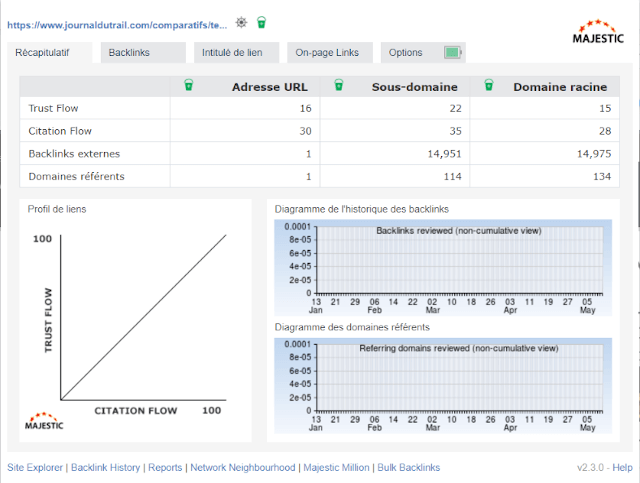
Even if you're auditing your website's content, the links pointing to your pages are crucial. Take advantage of the interest you have in each of your content pieces to check the quality of your backlinks.
To perform this analysis, you have no choice but to use online tools. I recommend using Majestic or Woorank. The data obtained allows you to check all of your backlinks and refine your site's popularity work.
🖼 Inspect the visual content

In addition to your texts, your visual content is an important element to analyze during your SEO content audit. Make sure that the videos offered are still online and that they don't slow down your pages' loading speed too much. Regarding images, the absolute priority is to ensure a mobile-friendly display. During your content audit, here's what you should focus on.
- Format: Is the format of your images suitable for the web? Favor PNG, JPEG, or WebP files to ensure proper loading on digital devices.
- Size: The size of your images is essential for proper display, mainly on mobile devices (phones and tablets). A dimension of 640 pixels is perfectly suitable for online publications.
- Quality: Before publishing an image on the web, make sure it has good display quality on digital screens.
- Weight: To speed up the loading time of your pages, you need to reduce the image's weight by compressing it. If you're using WordPress, you can use a plugin to do this work. You can also compress your images on TinyPNG before adding them to your CMS.
- Image name: Give your images a representative name of the content. Separate words with hyphens and avoid underscores.
- "Alt" attribute: This short text allows search engines to understand the content of your image. If you want a chance to appear on Google Images, you must take care of this attribute.
- Copyright: To avoid penalties, you should only publish copyright-free images. The best solution is to offer only your own images. If this is not possible, you have access to many sites offering free and copyright-free images.
👷♂️ Establish an action plan after an SEO content audit

Now that you've completed your content audit, you'll determine the actions to take and prioritize them. To group all the essential tasks to carry out, creating a content calendar is the best way to proceed.
First, determine which actions are most urgent to ensure a good ranking and to respond effectively to users' expectations. You'll also adjust your priorities to improve your sales and return on investment.
Next, prioritize the actions to be taken for each URL. Include all the previously analyzed data and plan who will do the work and when it should be done. By doing so, you efficiently adapt your updates to your overall content marketing strategy.
✅ Content audit checklist
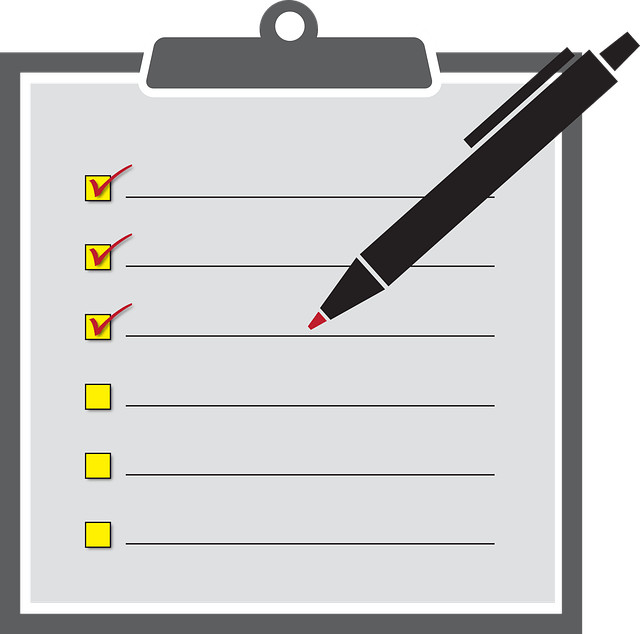
To help you conduct your content audit, follow this checklist that summarizes the entire article. Remember that this is an essential element for a successful SEO strategy.
- Objectives
- Visibility
- Engagement
- Conversion
- Statistics
- Performance
- Bounce rate
- Click-through rate
- Traffic source
- Connection time
- Number of pages per visitor
- Conversion rate
- SERP ranking evolution
- Number of keywords
- URLs
- Find content to optimize
- Classify content to update
- Timeliness
- Internal linking
- External links
- Dates in the text
- Content timeliness
- Content relevance
- Product or service availability
- Optimization
- HTML
- Semantics
- Lexical field
- Metadata
- Call to action
- Backlinks
- Relevance
- Quality
- Functionality
- Visual content
- Format
- Size
- Quality
- Weight
- Image name
- "Alt" attribute
- Copyright
- Action plan
- Priorities
- Content calendar
🎬 Conclusion
Need to go further?
If you need to delve deeper into the topic, the editorial team recommends the following 5 contents:
- Semantic Audit: SEO Analysis and Recommendation Tool
- Keyword Cannibalization: Solutions and Strategies
- Synonyms and SEO: Optimize Your Content for Search Engines (and Your Reader!)
- Google's Content Quality Standards in One Infographic
- Poor Quality Content: What to Do to Avoid Destroying Your Google SEO?
